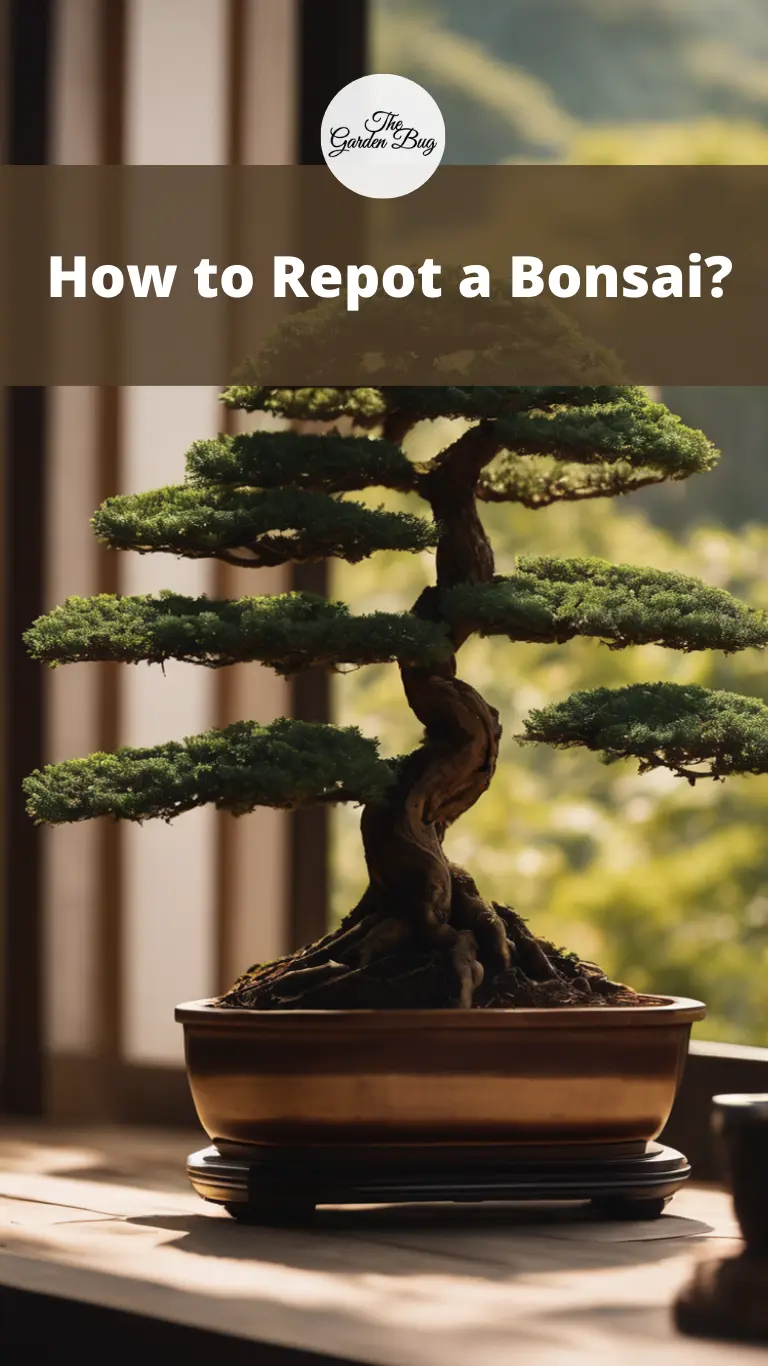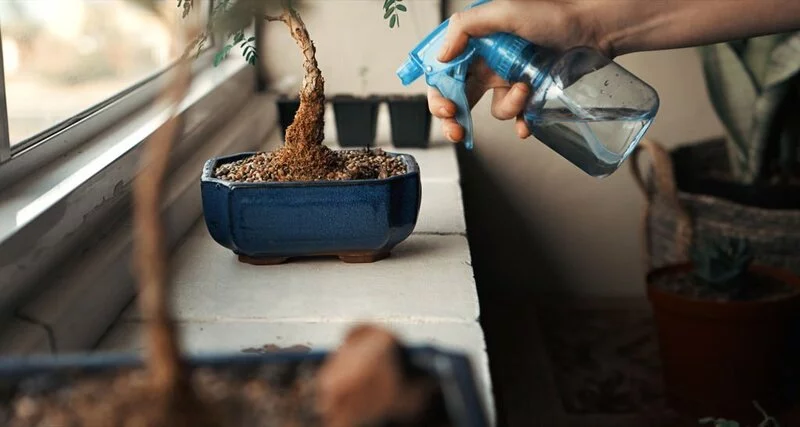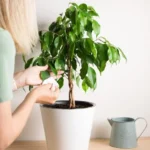Today, we’re embarking on a journey into the miniature world of bonsai trees. These little wonders are more than just plants – they’re living art, requiring patience, care, and a gentle hand. One of the most essential skills for any budding bonsai artist is learning how to repot these small trees. It might sound simple, but there’s a lot to consider. But fear not, this guide is here to help you master this skill.
- 🌱【Ready-to-use Pre-mix】: Simplify repotting your Bonsai and other plants with our premium, fast-draining Bonsai potting soil mix. It comes pre-mixed and sifted for your convenience.
- 🌱【Optimal Blend for Perfect Results】: Experience Bonsai bliss! Our specially crafted Bonsai plant mix provides ideal drainage, pH balance, water retention, nutrient uptake, and aeration. Achieve the perfect balance of air and moisture while nourishing your plants with essential nutrients.
- 🌱【Versatile for All Plants】: Enjoy a harmonious blend of nature that caters to all Bonsai and container-grown plants. From herbs and cacti to succulents and more, our mix suits any potted plant. Plus, all aggregates are sourced locally in the USA.
- 💚【Eco-friendly Sealed Packaging】: Our commitment to the environment shows with our durable, resealable Ziplock Standup Pouch made from recycled materials. Together, we contribute to a greener world ♻️.
- ✅【Guaranteed Satisfaction】: At The Bonsai Supply, we’re passionate about delivering top-quality plant soil mixes. Trusted by our nursery and loved by customers, this soil mixture is our number one seller. In the unlikely event that you don’t absolutely adore this Bonsai soil mix, rest easy knowing you’re backed by our 100% Money-Back Satisfaction Guarantee. Your happiness is our priority.
When to Repot a Bonsai?
The first question on your mind might be, “When is the best time to repot my bonsai tree?” The answer largely depends on your tree’s species and health. Typically, younger bonsai trees require repotting every two years, while older ones need it every three to five years.
However, your tree will also give you signals when it’s ready to move. If you notice slower growth, or if the roots start to circle the pot or poke out of the drainage holes, it’s time to give your bonsai a new home. It’s best to do this in late winter or early spring, just as the tree is waking up from its winter dormancy and ready for a growth spurt. Now that we know the when, let’s get to the how of repotting your bonsai tree.
Preparing for the Repotting
Before we get our hands dirty, we need to prepare. First, choose a suitable bonsai pot. Your bonsai tree might have outgrown its old pot, or maybe you’re just looking for a fresh style. Whatever the case, make sure the pot is big enough for the roots to spread out but small enough to keep the tree in check. Remember, bonsai is all about balance!
Next up is soil. Bonsai trees need well-draining soil to thrive. You can purchase a specialized bonsai soil mix, or you can make your own with equal parts of coarse sand or grit, peat moss or compost, and regular potting soil.
Finally, gather your tools. You’ll need a clean pair of pruning shears, a root rake, and a pair of chopsticks or a small stick to help you work the soil in and around the roots. Now, let’s repot!
- DIMENSIONS: Bonsai Pot 7.8*3.2inch ; Bamboo Tray 5.9*0.5inch; Mesh Pad 1.8 Inch
- MATERIAL: Handmade high temperature unglazed ceramic, more breathable than glazed pot
- FEATURES: Looks like rough pottery pot, plain color, solid, massy, Vintage Rustic Style
- DRAINAGE HOLE: Drainage hole in the middle of bottom come with free mesh pad, prevent soil falling
- MULTI USE: Bonsai ,succulent planting, plant display, home office decoration ,present for friends. Plants are NOT Included in the package
Step-by-Step Guide to Repotting a Bonsai
Start by gently removing your bonsai from its old pot. Use the root rake to loosen the soil and untangle the roots. Don’t be too rough – we want to keep as many of the fine roots intact as possible.
Next, trim back any excessively long or thick roots. This is what keeps your tree small and manageable. Leave enough roots for the tree to absorb water and nutrients.
Now, prepare your new pot. Cover the drainage holes with mesh to prevent soil from washing away. Create a small mound of soil in the center of the pot.
Then, place your bonsai on top of the mound, spreading out the roots evenly. The tree should be positioned off-center for the best visual balance.
Fill in around the roots with your soil mix, using your chopsticks to work the soil in around the roots and eliminate air pockets.
Finally, water thoroughly and place your bonsai in a shaded, protected spot for a few weeks to recover. Voila! You’ve successfully repotted your bonsai tree. Now, let’s talk about what comes next.
- 🌳 【Stimulate Root Growth & Health】: Our special blend is expertly formulated to promote robust root growth and optimal health. Packed with essential micro-nutrients, it provides your trees with the nourishment they crave.
- 👍 【Convenient & Slow Release Formula】: Experience hassle-free care with our once-a-month slow-release formula. No need for frequent applications; our easy-to-use formula simplifies your bonsai maintenance routine.
- 🌱 【Root-Friendly & Non-Burning】: Rest easy knowing our formula is gentle on roots. It won’t cause burns or damage, ensuring your bonsai’s well-being and longevity.
- ✅ 【Rapid & Vigorous Results】: Watch your trees flourish! Our fertilizer delivers super-fast results, enhancing overall vigor and health, leading to thriving and beautiful bonsai.
- As seen as on YouTube Channel ➡️ We Are The Bonsai Supply
Caring for a Bonsai after Repotting
So, you’ve repotted your bonsai tree. Now what? It’s important to give your little tree some TLC in the weeks following repotting. Water it well, but make sure it’s not waterlogged. Try to keep it in a slightly shaded and sheltered spot where it can recover without being stressed by harsh sun or winds. Once you see new growth, you’ll know your tree is happy in its new home!
Common Mistakes in Repotting Bonsai and How to Avoid Them
Repotting a bonsai tree isn’t rocket science, but it’s easy to make a few common mistakes. One is not trimming the roots enough – remember, we want to keep the tree small. But be careful not to trim too much either, as the tree needs enough roots to take up water and nutrients.
Another mistake is repotting at the wrong time. Remember, late winter or early spring is the best time, just as your tree is ready to start growing again.
Finally, don’t forget to water your tree after repotting. It might be a bit shocked after the move and will appreciate a good drink to help it settle in.
Conclusion
And that’s all there is to it, folks! Repotting your bonsai tree is an essential part of maintaining its health and beauty. It might seem a bit daunting at first, but with a little patience and practice, you’ll soon be a pro. So grab your pruning shears, roll up your sleeves, and get ready to dive into the wonderful world of bonsai.








